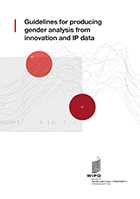Innovation Gender Gap
Innovation and creativity are the engines of economic growth. Policies that support and encourage these activities are likely to spur creativity and innovative thinking, potentially solve the challenges today, and increase living standards worldwide.
However, there seems to be a disparity when examining who is behind the innovative and creative endeavors, especially when measured through participation in the intellectual property (IP) protection system. In particular, there is a gender participation issue in the IP system.








